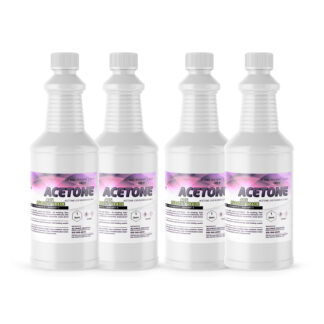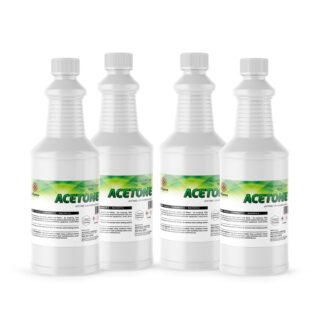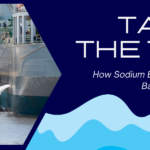
Leather Glazing 101: The Essential Role of Ethyl Acetate in Crafting Shiny Leather Products
Ethyl Acetate and Leather
Leather, a material heralded for its durability and aesthetic appeal, finds itself at the heart of numerous industries, from fashion to furniture. Achieving that high-shine, polished finish on leather products is a meticulous process known as glazing. In this in-depth guide, we will traverse through the compelling world of leather glazing, with a special focus on a pivotal player – ethyl acetate.
Section I: Unveiling the Art of Leather Glazing
What is Leather Glazing?
Leather glazing refers to the process where leather surfaces are polished to achieve a glossy, shiny appearance. This aesthetic enhancement not only elevates the visual appeal but also adds a protective layer that guards against external elements, ensuring longevity and sustained quality of leather products.
Why is Glazing Important?
The gleam on high-quality leather is often synonymous with luxury and premium craftsmanship. Glazing not only uplifts the aesthetic value but also enriches the tactile experience, offering a smooth, refined finish that is cherished by connoisseurs and everyday consumers alike.
Section II: Spotlight on Ethyl Acetate
Characteristics and Significance
Ethyl acetate, celebrated for its excellent solvent properties, plays a crucial role in the realm of leather glazing. It dissolves resins and dyes without compromising the structural integrity or visual appeal of leather, ensuring an even, consistent application of finishes and colors.
Application in Leather Glazing
The introduction of ethyl acetate into the glazing process enables the formation of a sleek, uniform layer on the leather surface, contributing significantly to the overall glaze and finish. Its rapid evaporation rate also minimizes drying time, optimizing the manufacturing timeline.
Section III: Diving into the Chemical World of Leather Crafting
The Role of Acetone
Acetone, another solvent widely recognized in the leather industry, plays a vital role in dyeing and finishing processes akin to ethyl acetate. Particularly in dyeing, acetone ensures that the pigments are evenly distributed, offering a uniform, vibrant color across the leather.
-
 Acetone ACS Grade$36.00 – $4,500.00
Acetone ACS Grade$36.00 – $4,500.00 -
 Acetone Technical Grade$30.00 – $3,900.00
Acetone Technical Grade$30.00 – $3,900.00
Exploring Isopropyl Alcohol in Leather Work
Isopropyl alcohol, utilized extensively in leather cleaning and preparation, ensures that the material is free from impurities that could potentially hamper the adhesion of dyes and finishes. Its ability to evaporate quickly without leaving residues makes isopropyl alcohol a preferred choice for pre-treatment in leather processing.
-
 Isopropyl Alcohol 99%$19.00 – $3,500.00
Isopropyl Alcohol 99%$19.00 – $3,500.00
Section IV: Comprehensive Guide to Leather Glazing with Ethyl Acetate
Step-by-Step Process
Leather glazing, while seemingly straightforward, is an intricate process that demands precision and expertise. Let’s explore a generalized step-by-step guide to understand how ethyl acetate plays a vital role in leather glazing:
- Leather Preparation: The leather is first cleaned and prepared, often using isopropyl alcohol, to remove any residues or contaminants.
- Applying the Finish: A finish, often containing dissolved resins or dyes in ethyl acetate, is uniformly applied to the leather surface.
- Drying Phase: The rapid evaporation of ethyl acetate facilitates a swift drying process, leaving behind a smooth, uniformly coated leather surface.
- Polishing: The leather is then polished, either manually or mechanically, to elevate the gloss, utilizing the uniform layer formed due to the ethyl acetate solvent properties.
- Quality Check: The glazed leather is thoroughly checked for consistency, shine, and quality to ensure it meets the desired specifications.
Safety and Precautionary Measures
Handling chemicals, even ones as relatively safe as ethyl acetate, demands adherence to safety protocols to ensure a secure and health-conscious working environment. Here’s a quick guide to managing ethyl acetate safely during the leather glazing process:
- Proper Ventilation: Ensure that the working area is well-ventilated to prevent the accumulation of vapors, safeguarding against potential respiratory issues.
- Protective Gear: Utilize gloves, masks, and goggles to safeguard against any accidental splashes or prolonged exposure to ethyl acetate.
- Storage: Store ethyl acetate and other chemicals like acetone in a cool, dry place, away from direct sunlight and potential heat sources to prevent unwanted reactions.
- Waste Management: Ensure that any waste, including used ethyl acetate, is disposed of in accordance with local regulations and guidelines.
Benefits of Using Ethyl Acetate in Leather Glazing
Ethyl acetate brings forth a plethora of advantages in the leather glazing process, some of which include:
- Uniform Application: Ensures that finishes and dyes are evenly applied across the leather surface.
- Rapid Drying: Its quick evaporation rate minimizes the drying time between manufacturing stages.
- No Residue: Unlike some other solvents, ethyl acetate doesn’t leave behind any residue, maintaining the pristine quality of the leather.
- Safe Handling: With relatively low toxicity, it provides a safer alternative to other industrial solvents, when handled with due care.













